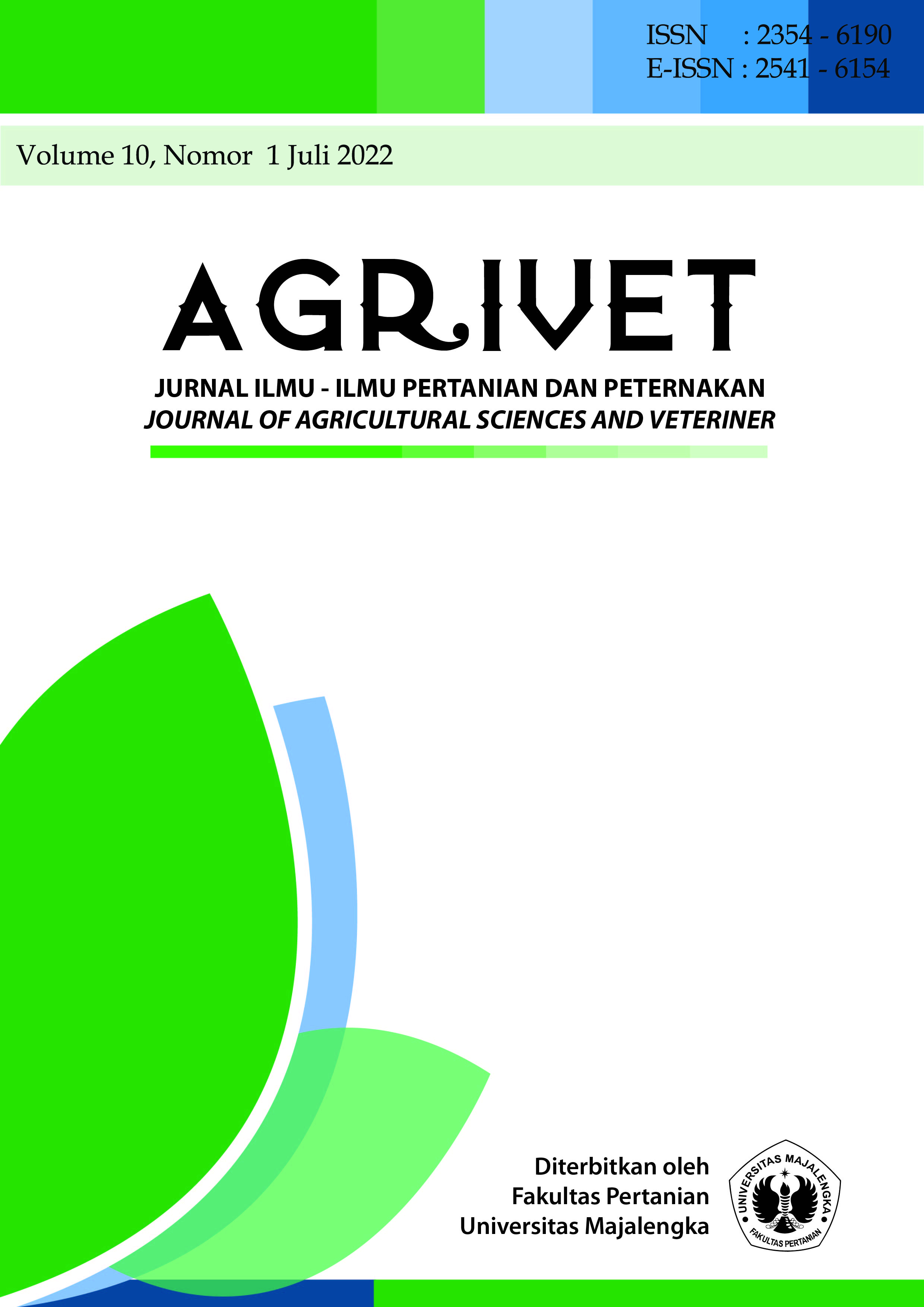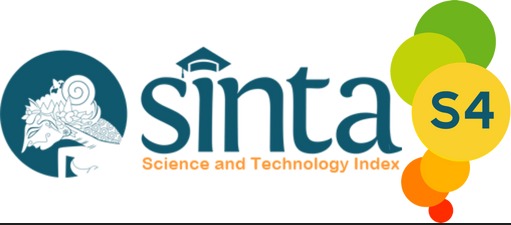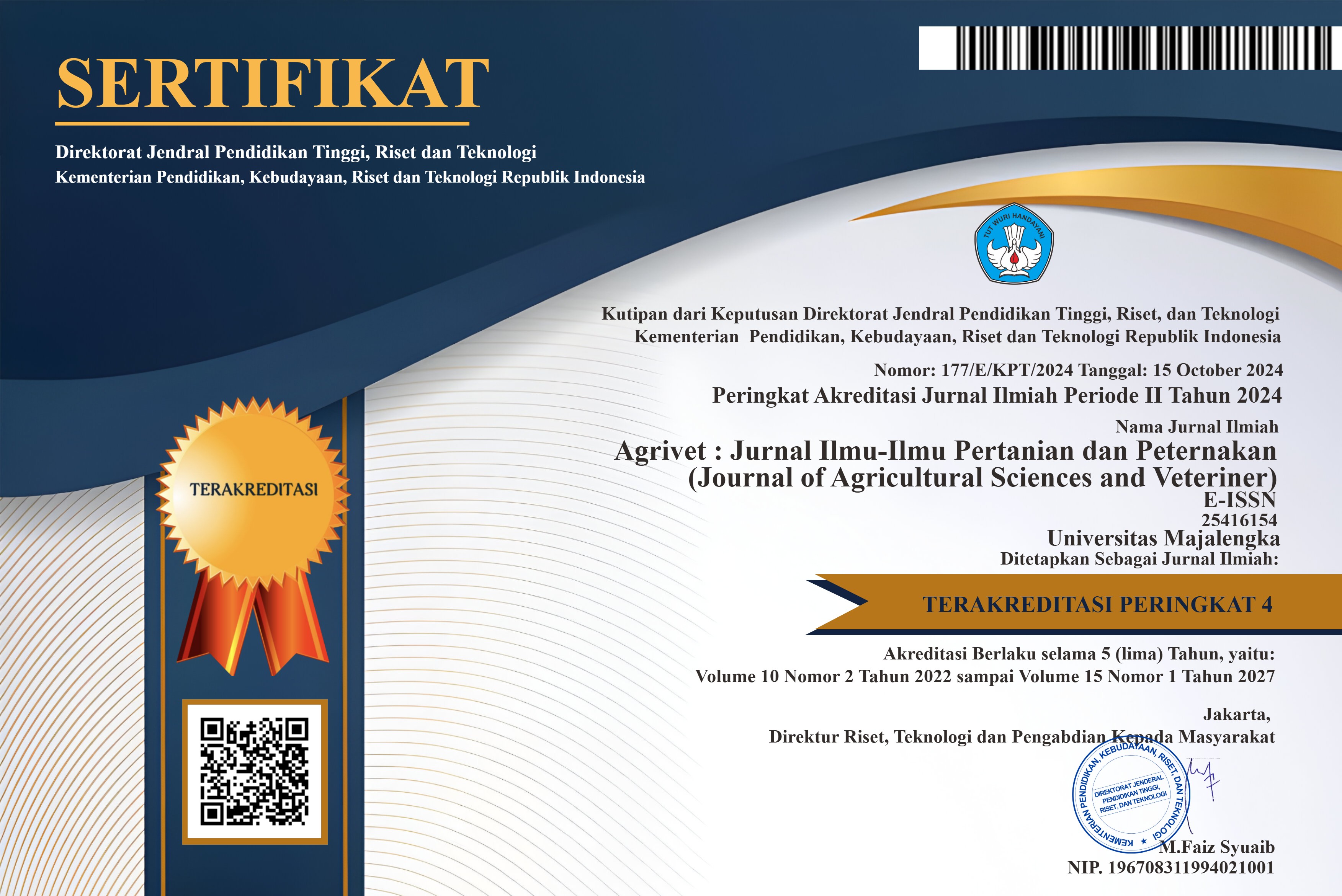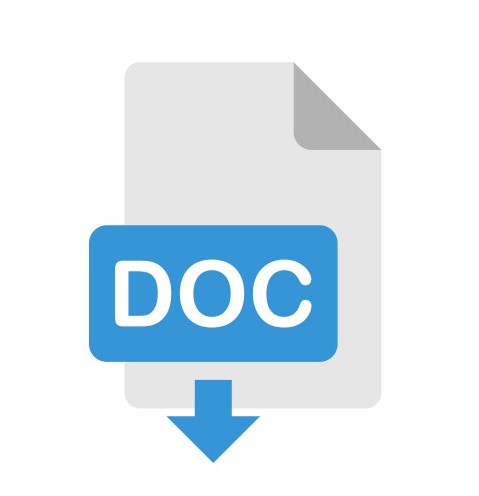PENGARUH DOSIS PUPUK KCI TERHADAP PERTUMBUHAN DAN PRODUKSI TANAMAN TERUNG (Solanum melongena L.)
DOI:
https://doi.org/10.31949/agrivet.v10i1.2389Abstract
The use of KCl fertilizer in plant cultivation can improve soil fertility. KCl fertilizer can increase the growth and production of eggplant, both in quality and quantity. The purpose of this study was to determine the effect of the dose of KCl fertilizer on the growth and production of eggplant. This study is a one-factor trial using a completely randomized design (CRD). The factor tested was the dose of KCl fertilizer which consisted of 6 levels, namely: without KCl fertilizer (D0), 25 grams/plant (D1), 50 grams/plant (D2), 75 grams/plant (D3), 100 grams/plant (D4), 125 grams/plant (D5). Each treatment was replicated 4 times, and each replication consisted of 2 plants. The observation variables in this study were plant height, number of leaves, leaf area, number of fruits per plant, fruit length per plant, wet weight, and dry weight of the plant. Observations of plant height and number of leaves were carried out when the eggplant plants were 14 DAP with an interval of 7 days until the vegetative growth ended. The treatment dose of KCl fertilizer had a significant effect on the growth and production of eggplant plants. Dosage of KCl 125 gr/plant resulted in the best growth seen in plant height and a higher number of leaves, respectively 88.00 cm and 37.00 fruit. The highest eggplant production at the dose treatment KCl fertilizer 125 g/plant seen in the number of fruit, fruit length, wet weight, and dry weight of fruit per plant each of 7 pieces; 19.92 cm; 1,152.97 grams and 228.04 grams.
Keywords:
dossge, KCL fertilizer, growth, production, eggplantDownloads
References
Cahyono. 2013. Effective Microoganism 4. Indonesia Kyusei Nature Farming Jakarta
Dinawati, N. R. 2017. Pengaruh Pupuk Kandang Berbahan Kotoran Ayam terhadap Pertumbuhan Tanaman Cabai Merah (Capsicum annum var. Longum). Skripsi.
Fadil, M dan Sutejo, H. 2020. Pengaruh Jenis dan Dosis Pupuk Organik terhadap Pertumbuhan dan Hasil Tanaman Terong (Solanum melongena L.) Varietas Milano. Agrifor. https://doi.org/10.31293/af.v19i1.4617.
Firmansyah, I., Syakir, M., Lukman, L. 2017. Pengaruh Kombinasi Dosis Pupuk N. P. dan K terhadap Pertumbuhan dan Hasil Tanaman Terung (Solanum melongena L.). Jurnal Hortikultura. Vol. 27. No. 1. 69-78.
Gardner, Franklin P., Pearce, R. B., Mitchell, R. L., & Susilo, H. (2012). Fisiologi Tanaman Budidaya. (Terjemahan oleh Herawati Susilo). Universitas Indonesia (UI-Press). Jakarta.
Haryoto. 2013. Bertanam Terong dalam Pot. Yogyakarta: Kanisius.
Jumini. 2009. Pertumbuhan dan Hasil Tanaman Terung Akibat Pemberian Pupuk Daun Gandasil D dan Zat Pengatur Tubuh Harminik. Jurnal Flortek 4. 73-80.
Kusandriani dan Permadi, 2008. Membuat Kebun Tanaman Obat. Pustaka Bunda. Jakarta.
Marviana, D. D. 2014. Respon Pertumbuhan Tanaman Terung (Solanum melongena L.) Terhadap Pemberian Kompos Berbahan Dasar Tongkol Jagung dan Kotoran Kambing. Sebagai Materi Pembelajaran Biologi Versi Kurikulum 2013. Skripsi. Program Studi Pendidikan Biologi: Universitas Ahmad Dahlan. Yogyakarta.
Sunarjono, Hendro. 2013. Bertanam 36 jenis Sayur. Penebar Swadaya. Jakarta.
Published
How to Cite
Issue
Section
License
Copyright (c) 2022 Maryono, Nugraheni Hadiyanti, Supandji

This work is licensed under a Creative Commons Attribution-ShareAlike 4.0 International License.
An author who publishes in the Jurnal Agrivet agrees to the following terms:
- Author retains the copyright and grants the journal the right of first publication of the work simultaneously licensed under the Creative Commons Attribution-ShareAlike 4.0 License that allows others to share the work with an acknowledgment of the work's authorship and initial publication in this journal
- The author is able to enter into separate, additional contractual arrangements for the non-exclusive distribution of the journal's published version of the work (e.g., post it to an institutional repository or publish it in a book) with the acknowledgment of its initial publication in this journal.
- The author is permitted and encouraged to post his/her work online (e.g., in institutional repositories or on their website) prior to and during the submission process, as it can lead to productive exchanges, as well as earlier and greater citation of the published work












